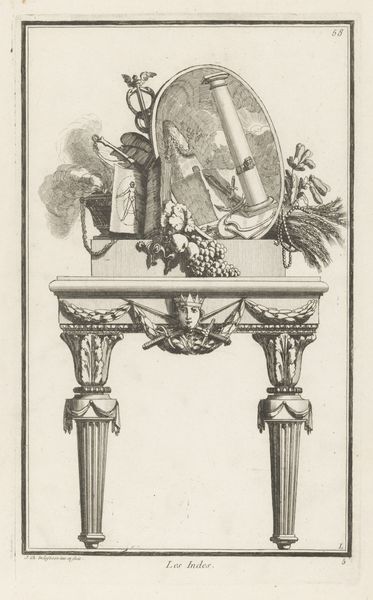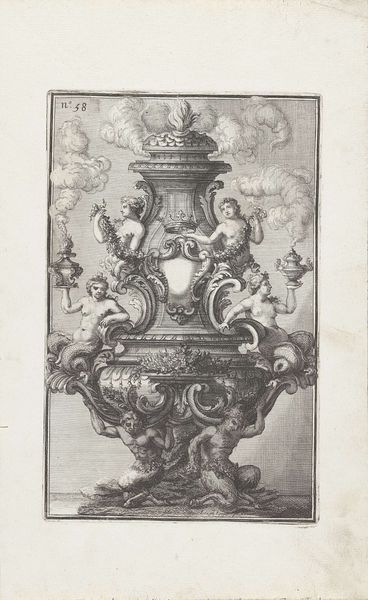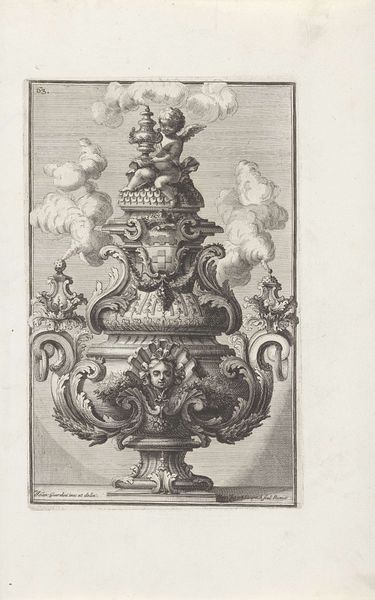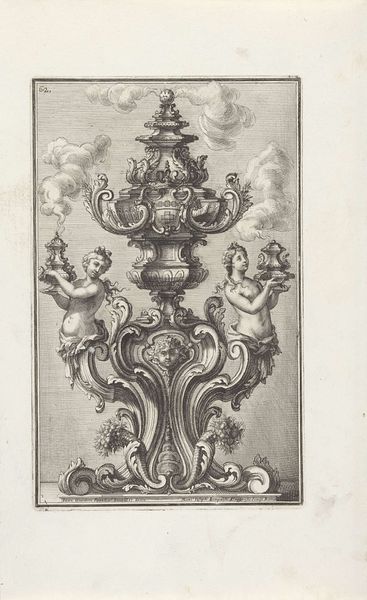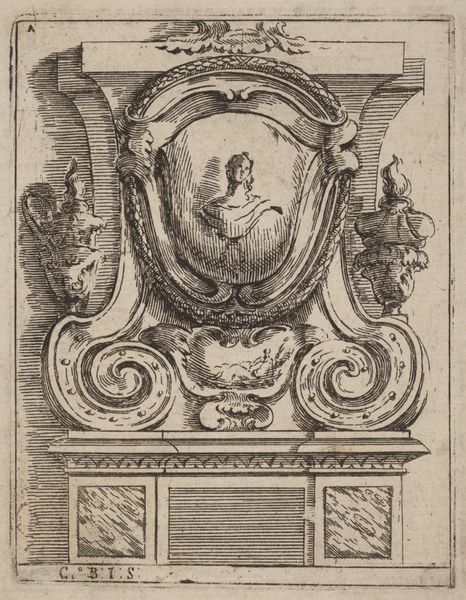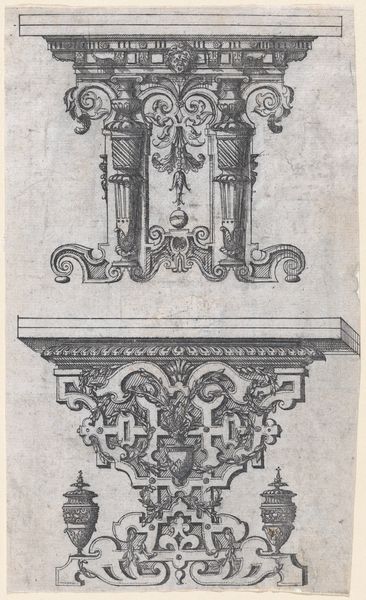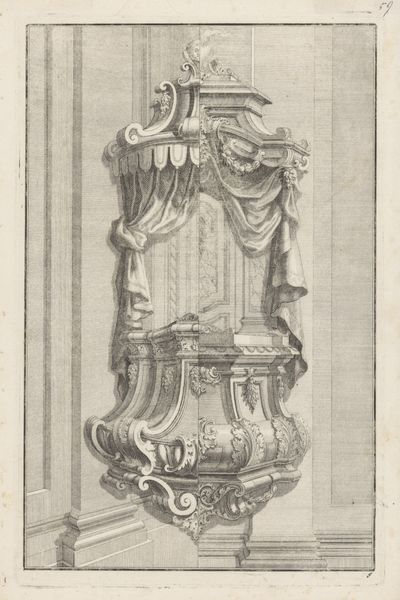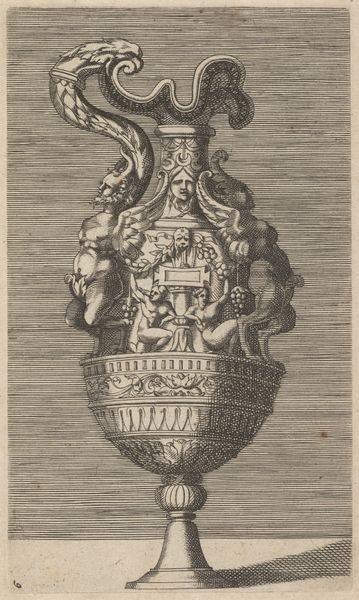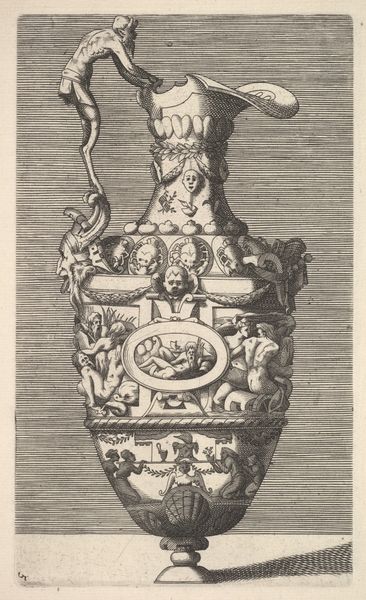
drawing, print, engraving
#
drawing
#
allegory
# print
#
mannerism
#
figuration
#
history-painting
#
engraving
Dimensions: sheet: 5 9/16 x 3 9/16 in. (14.1 x 9 cm)
Copyright: Public Domain
René Boyvin created this engraving of a ewer, an elaborate pitcher, in the mid-16th century, a time when printed images were key in disseminating artistic ideas. Boyvin was a key figure in the School of Fontainebleau, known for its distinctive ornamental style which drew on classical antiquity. This print exemplifies this, taking the form of a vessel, but adorned with mythological scenes including Venus, the Roman goddess of love and beauty. At the time, women were often reduced to symbols of beauty or morality, but here Venus subverts those constraints, depicted with active agency. The ewer's design weaves together images of power, femininity, and classical ideals, reflecting the complex tapestry of Renaissance thought, even the grotesque masks and insects that may seem unsettling to our contemporary eyes, were part of the visual vocabulary that held particular meaning for its original audience. Boyvin invites us to reflect on the layers of meaning embedded in objects and images, and how these interact with our understanding of culture, beauty, and the narratives we inherit.
Comments
No comments
Be the first to comment and join the conversation on the ultimate creative platform.
